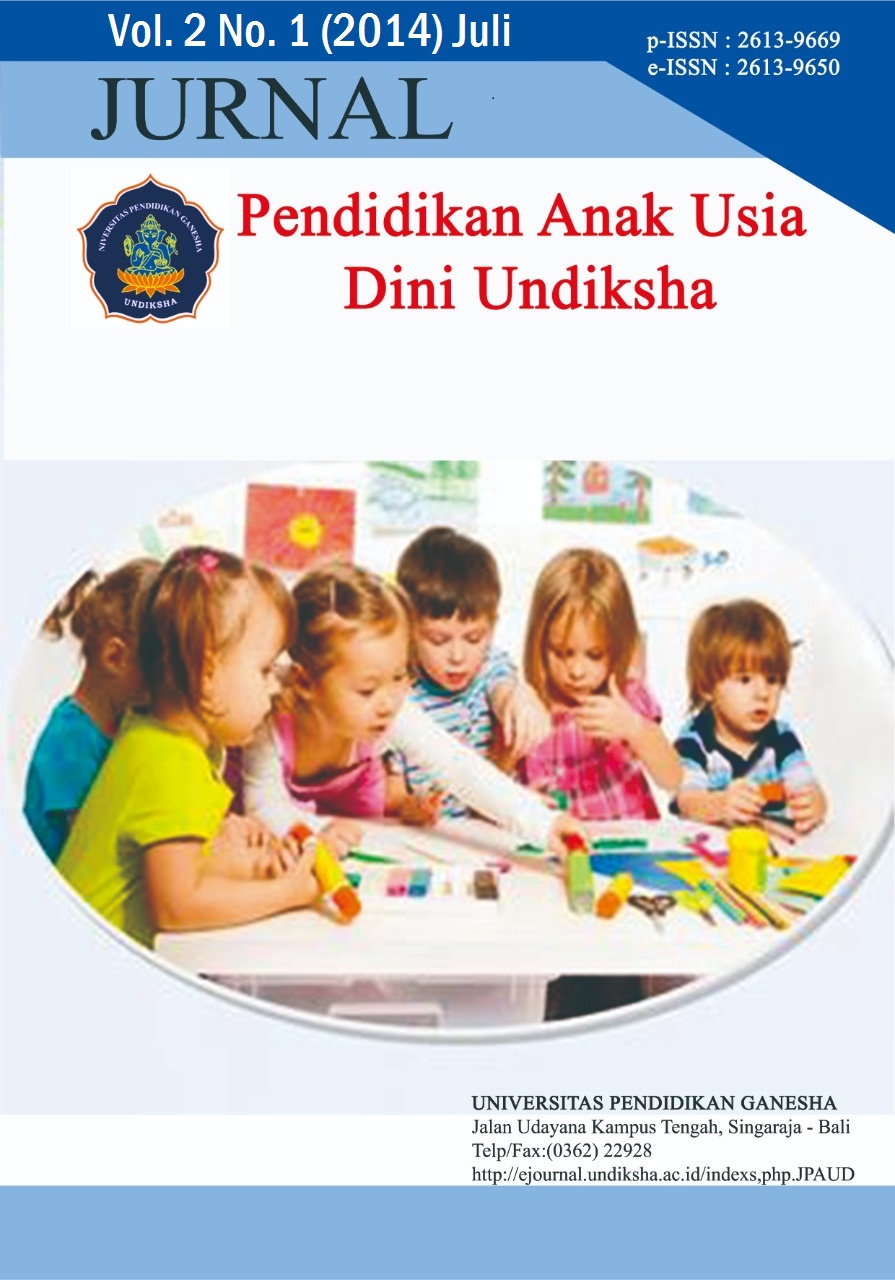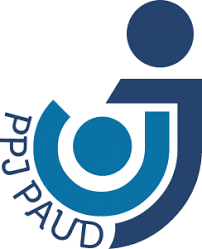PENERAPAN METODE DRILL BERBANTUAN MEDIA GAMBAR UNTUK MENINGKATKAN KEMAMPUAN BAHASA PADA ANAK
DOI:
https://doi.org/10.23887/paud.v2i1.4317Abstract
Penelitian ini bertujuan untuk mengetahui peningkatan kemampuan bahasa anak pada kelompok B semester II tahun ajaran 2013/2014 di PAUD Santi Kumara Liligundi dengan menerapkan metode Drill berbantuan media gambar.Penelitian ini adalah penelitian tindakan kelas dengan dua sikus. Setiap siklus terdiri dari tahap perencanaan tindakan, observasi, dan refleksi untuk merencanakan tindakan berikutnya. Pelaksanaan tindakan dalam penelitian adalah penerapan metode drill dengan media gambar. Subjek penelitian adalah 14 orang anak kelompok B semester II tahun ajaran 2013/2014 di PAUD Santi Kumara Liligundi. Variabel penelitian ini adalah peningkatan kemampuan bahasa anak. Untuk mengumpulkan data tentang variable kemampuan bahasa digunakan metode observasi. Data yang telah terkumpul di analisis dengan metode analisis statistic deskritif dan metode analisis statistic kuantitatif.Hasil anaalisis data menunjukkan bahwa terjadi peningkatan keterampilan membaca anak pada siklus I sebesar 71,38% yang berada pada kategori sedang mengalami peningkatan nilai rata-rata pada siklus II sebesar 87,00% menjadi tergolong pada kategori tinggi.Dari hasil penelitian tindakan kelas melalui penerapan metode drill Disertai Media gambar pada siklus I dan siklus II dapat ditarik kesimpulan bahwa penerapan Metode drill berbantuan Media Gambar dapat meningkatkan kemampuan bahasa anak kelompok B semester II tahun ajaran 2013/2014 di PAUD Santi Kumara Liligundi.Kata Kunci : Metode drill, Media gambar , kemampuan bahasa
This study to determine the increase in child language skills in group B the second semester of the academic year 2013/2014 in PAUD Santi Kumara liligundi by applying the drill method with images. This research is a follow-grade with two cycles. Each cycle consists of a planning phase of action, observation, and reflection to plan their next move. implementation of measures in this study is the drill method with images, the subject of this study were 14 children. variables of this study is to increase children's language abilities. to collect data on child language development used observational methods. collected data on quantitative descriptive analysis and qualitative descriptive analysis. Results of data analysis showed that an increase in the child's language ability in the first cycle of 71.38% which is in the medium category and increased the average value of the second cycle of 87.00% which is classified in the category of high.Results of the research through the application of the method of follow-grade by applying the drill method with images on the first cycle and second cycle can be concluded that the application of the drill method of drawing media-assisted can improve language skills of children in group B the second semester of the academic year 2013/2014 in early childhood Santi Kumara Liligundi.
keyword : drill method, images, language skills
Published
2014-11-06
How to Cite
., N. M. D. R. S., ., D. I. M. S. M., & ., L. A. T. (2014). PENERAPAN METODE DRILL BERBANTUAN MEDIA GAMBAR UNTUK MENINGKATKAN KEMAMPUAN BAHASA PADA ANAK . Jurnal Pendidikan Anak Usia Dini Undiksha, 2(1). https://doi.org/10.23887/paud.v2i1.4317
Issue
Section
Articles
License
Authors who publish with the Jurnal Pendidikan Anak Usia Dini Undiksha agree to the following terms:
- Authors retain copyright and grant the journal the right of first publication with the work simultaneously licensed under a Creative Commons Attribution License (CC BY-SA 4.0) that allows others to share the work with an acknowledgment of the work's authorship and initial publication in this journal.
- Authors are able to enter into separate, additional contractual arrangements for the non-exclusive distribution of the journal's published version of the work (e.g., post it to an institutional repository or publish it in a book), with an acknowledgment of its initial publication in this journal.
- Authors are permitted and encouraged to post their work online (e.g., in institutional repositories or on their website) prior to and during the submission process, as it can lead to productive exchanges, as well as earlier and greater citation of published work. (See The Effect of Open Access)











